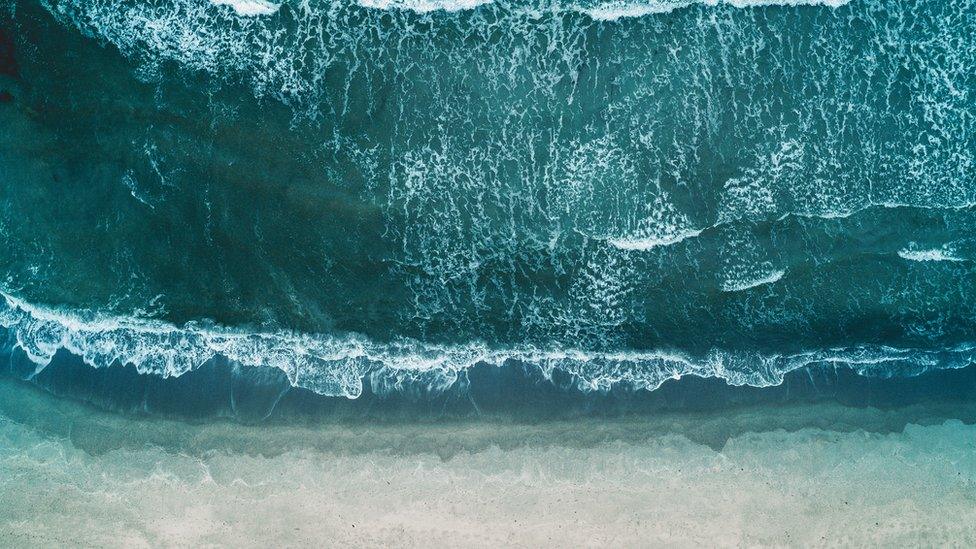New species discovered deep in the Pacific Ocean
- Published
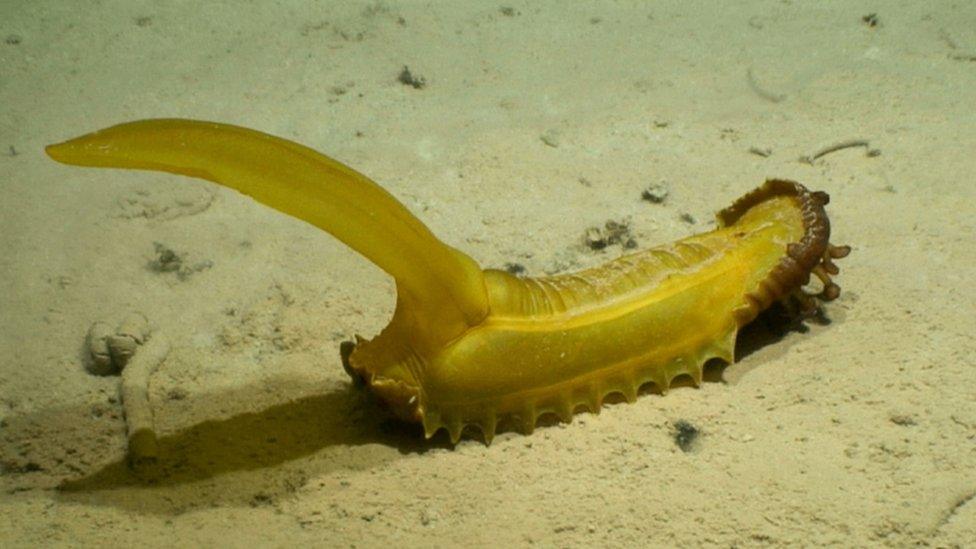
The new species were collected from deep within the central Pacific Ocean between Mexico and Hawaii using a remotely operated vehicle (ROV). This odd-looking deep sea species is the gummy squirrel (Psychropotes longicauda).
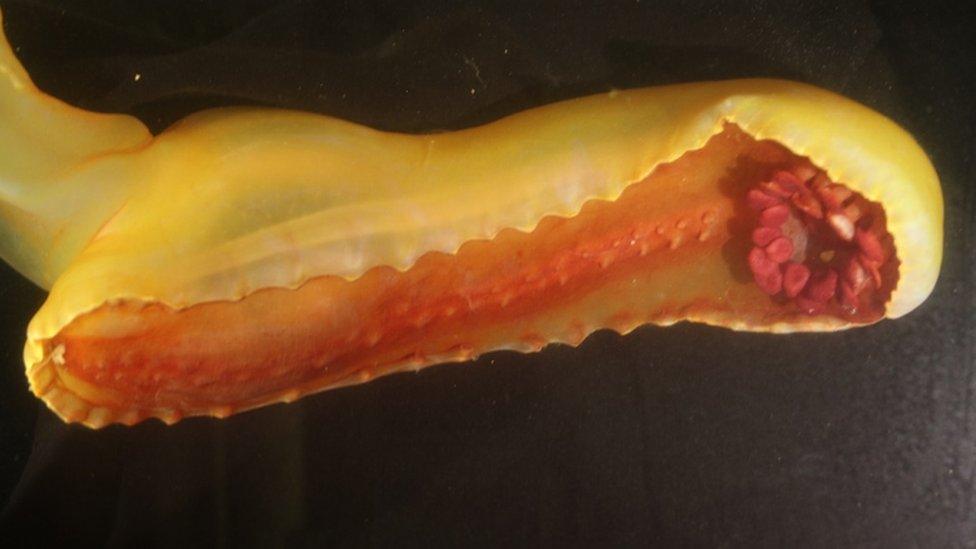
Overall, the ROV collected evidence of 48 different species, of which only nine are currently known to science. The remaining 39 may be new species. The underside of the gummy squirrel shows bright red feeding palps (flower-like structure) and underbelly.
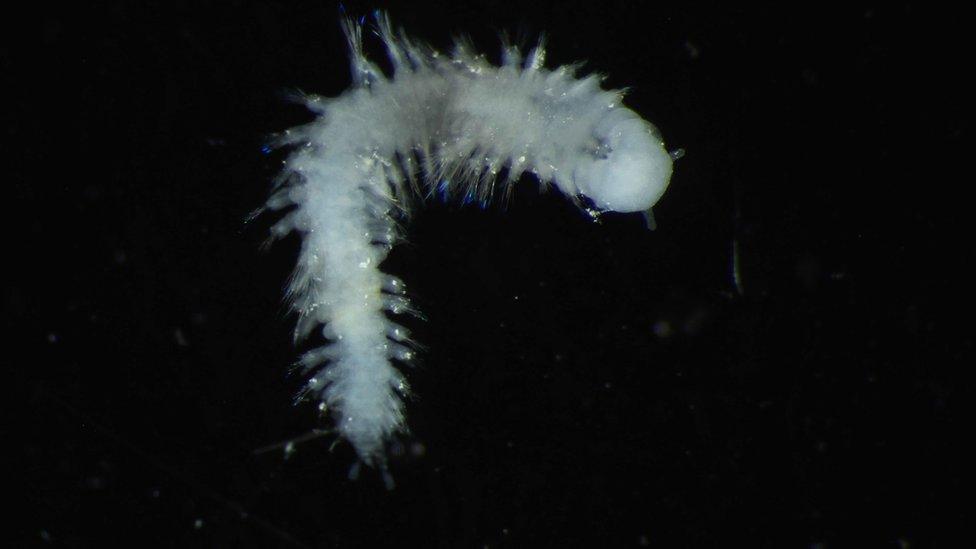
The Clarion-Clipperton Zone (CCZ) where the vehicle has been working covers over five million square kilometres in the Pacific Ocean. It is 5,500metres at its deepest. This newly-discovered worm hasn't yet been given a name.
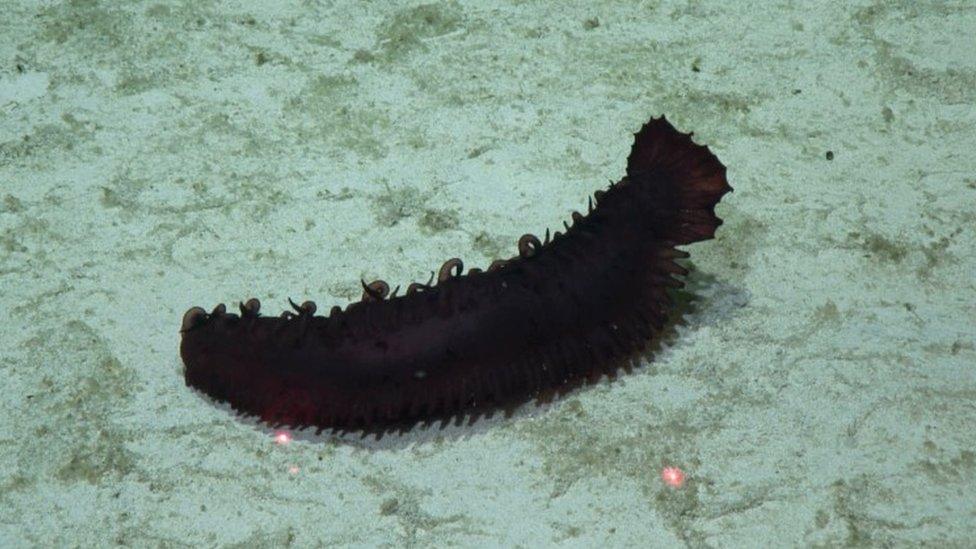
Four specimens of Psychronaetes sea cucumber were collected, and are thought to represent a new species.

A claw from the remote operated vehicle picks up Psychropotes verrucicaudatus - a type of sea cucumber.

This tulip-shaped sea sponge - or Hyalonema - is just one of the exciting discoveries by Dr Guadalupe Bribiesca-Contreras and her team. Dr Bribiesca-Contreras said: "I was definitely not expecting to find so many animals."
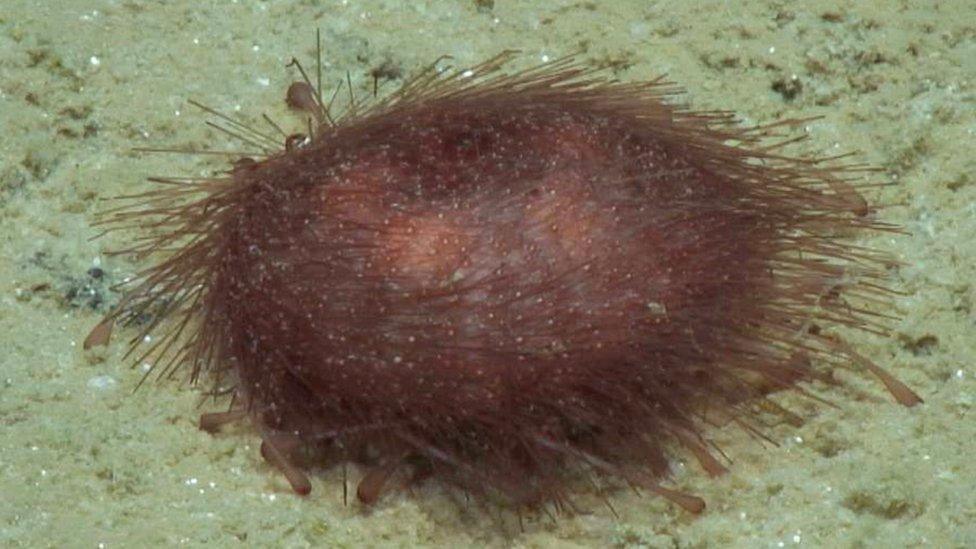
Some areas of the zone in the Pacific were nearly as deep as Mount Kilmanjaro is high. This is a Kamptosoma abyssale - a soft sea urchin.
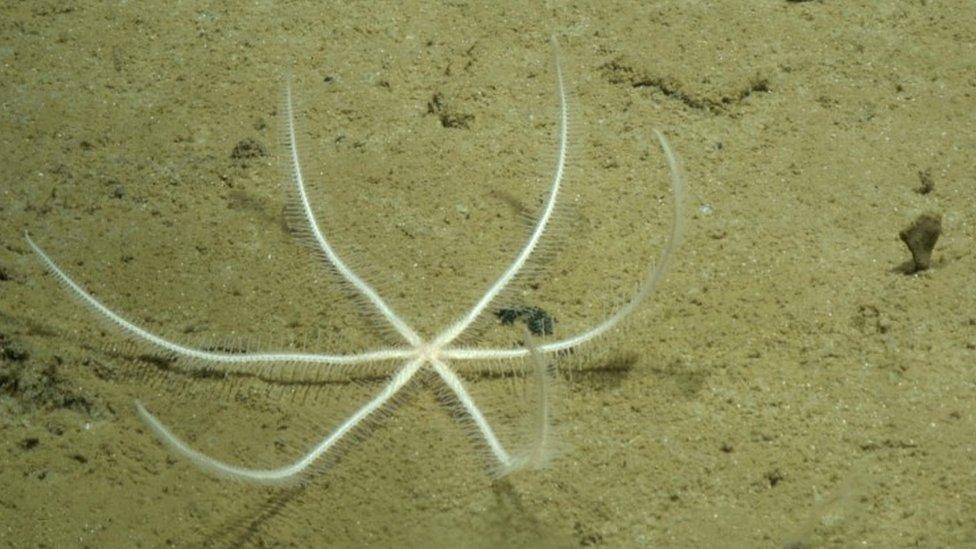
Older type specimens with fragile body parts, such as their arms, are often damaged due to less delicate collection methods used in the past like trawling when a net is dragged along the sand.
- Published8 June 2022
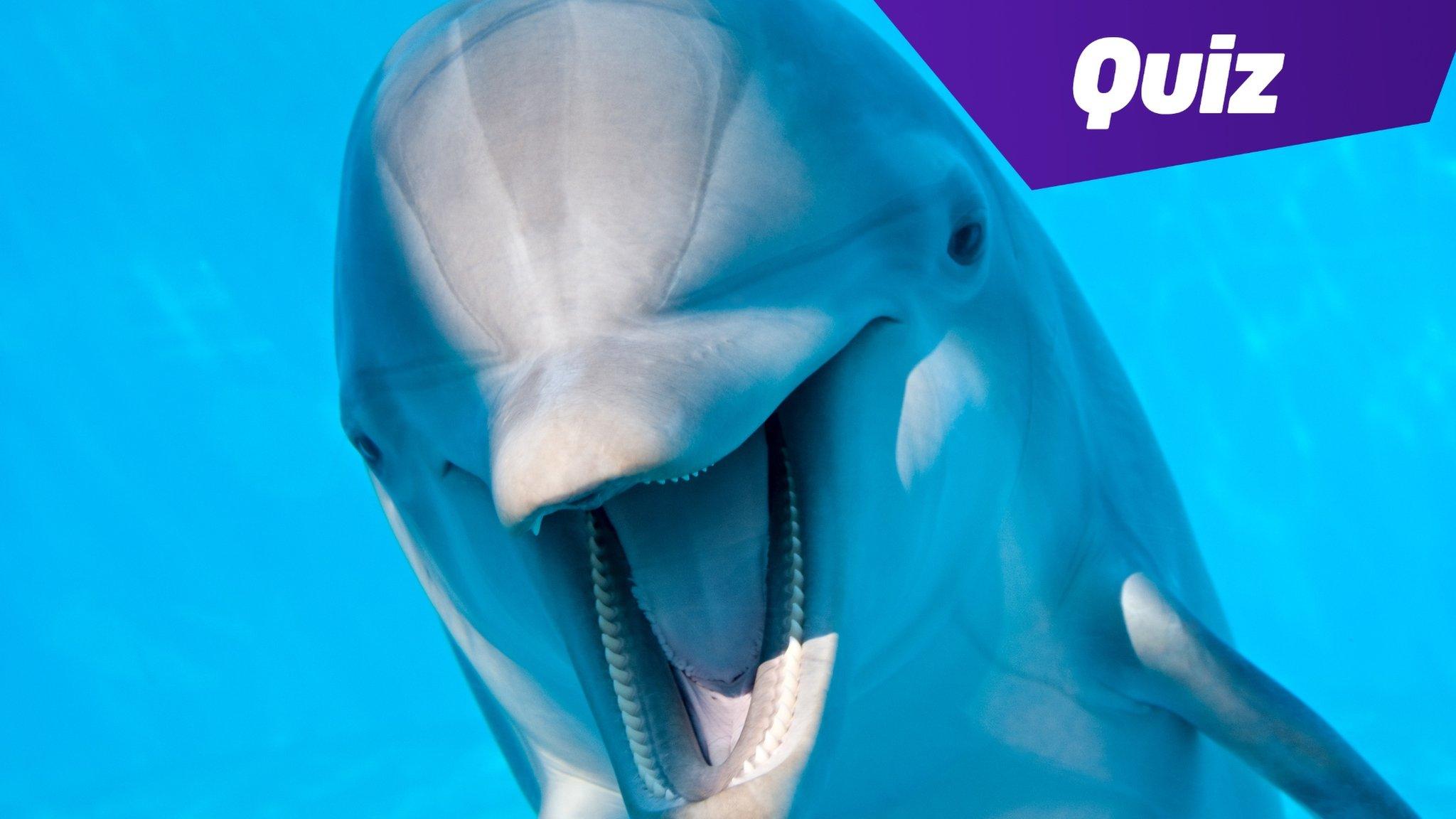
- Published8 June 2021
